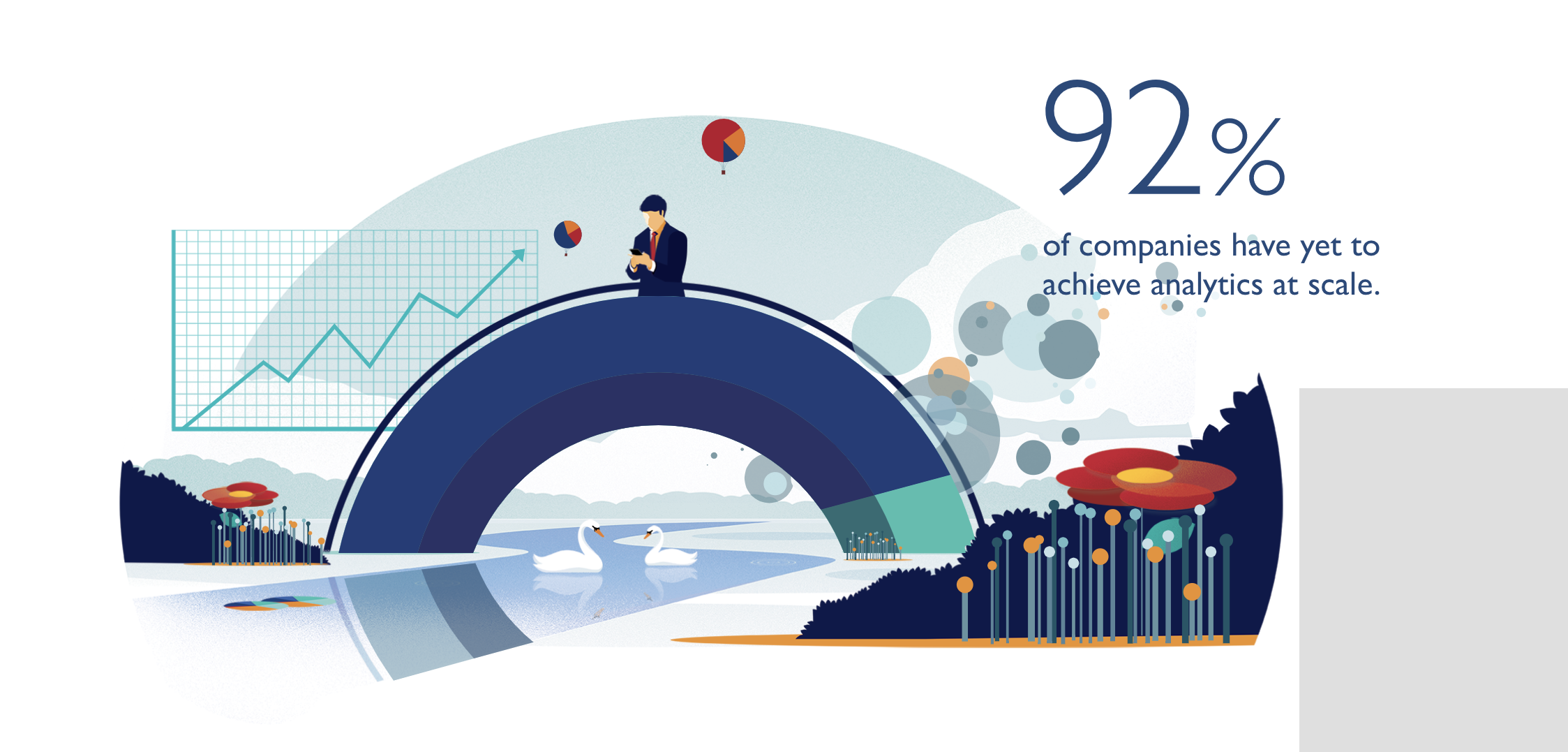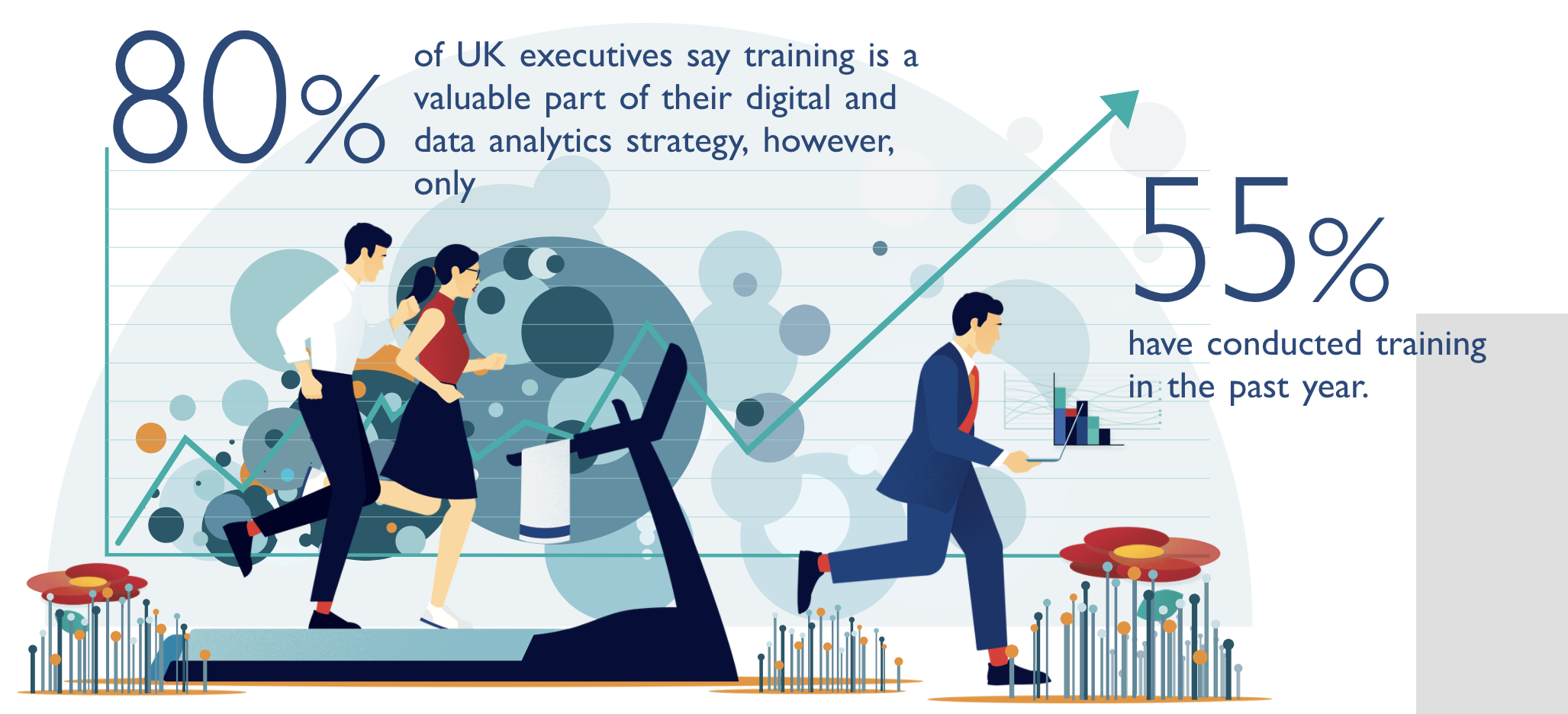The world's leading companies are cultivating a new business culture
Over the past three years, Jones Lange LaSalle (JLL) has cultivated Data Culture. When COVID-19 struck, their Data Culture helped them respond quickly and efficiently. The company's investment in data analytics had seen a return of $40 million, enabling the company to streamline compliance costs, reduce overheads and generate additional revenue through new initiatives.
This article, sponsored by Tableau, originally appeared in The Economist.
As the prime minister announced the UK’s nationwide lockdown from Downing Street, a lightbulb went out in the lobby of an apartment block on the other side of London. What would once have been a simple task for the building manager suddenly represented a big problem. Strategists at the building management giant Jones Lang LaSalle (JLL) had foreseen it. In the days leading up to the announcement they began pulling up HR data and combining it with inventory lists to see where managers may be cut off from services and left without the supplies to provide maintenance to their buildings. Within 24 hours of the prime minister’s announcement, JLL’s strategists were walking building managers through a plan for sharing resources and ensuring that their work could continue.
Over the past three years, Paul Chapman, JLL’s global director of business intelligence and technology, has worked to develop a data culture at the company. “Our facility managers can see the data for themselves, from showing them how old air conditioning units are and when they should be replaced, to how much each facility is costing per square foot.” Employees at every level of the company have access to this data through a dashboard, helping them to determine the root cause when problems arise and to figure out how to respond.
"Our facility managers can see the data for themselves, from showing them how old air conditioning units are and when they should be replaced, to how much each facility is costing per square foot."
Even before the lockdown, the results had been significant. The investment in data analytics had seen a return of US$40m, which enabled the company to streamline compliance costs, reduce overheads and generate additional revenue through new initiatives.
But JLL is part of a wider migration, as businesses around the world and across different industries look to curate their own data cultures. To reach their goal, each will have to navigate three particular challenges.
Seeds of doubt: driving a company-wide movement
Many businesses still see data as the sole preserve of the business intelligence department, out of reach for the rank and file. This perspective can be severely damaging to both a company’s performance and brand.
According to a recent survey conducted by leading analytics platform, Tableau, half of all knowledge workers in the UK wouldn’t want to work for a business that shows no sign of using data to inform decisions, gravitating instead towards companies that offer them the chance to work with data and develop their skills.
To grow strong, a data culture needs deep roots. Business leaders need to ensure that data is being used to inform employees’ decisions at every level of the company. A good way to do this is to spotlight individuals who are passionate about using data to solve challenges in their role. “Every single level of our company has a ‘data champion’,” explains JLL’s global director, Simon Beaumont. “As you go down our organisation, you find it isn’t just our analysts who are data champions. We have a concept called ‘positive deviance’, which celebrates people using data in a positive way. Those people will then be actively pushing their peers, asking them to do the same.”

Reap what you sow: navigating the skills gap
Once employees are engaged, a company needs to invest in giving them the right training and programs to cultivate a data culture. Organising an effective training plan requires a strategic balancing act: make it too basic and you lose momentum; make it too hard and you risk alienating your less data-literate employees and exacerbating the skills gap.
A survey of employees’ data proficiency is a useful starting point and can help underline your commitment to developing a company-wide data culture. The survey data can also help you determine how different teams are using data. Some may be better placed to collect data, while others may need the skills to communicate insights to their colleagues.
"Training is not just about technical skills, it’s also about how you think about data and develop a narrative around it."
“Training is not just about technical skills,” explains Mr Chapman. “It’s also about how you think about data and develop a narrative around it.” JLL’s own data proficiency survey revealed that the employees who were most adept at crunching numbers were not always the best at turning data analysis into relevant insights. “That’s a very different skill from being able to create a pretty table.”
The training itself can take many forms. Small, interactive group training can be an effective way to teach workers how to gain a better understanding of the particular data they work with on a daily basis. Bigger, more formal training courses can be used to layout universal guidelines—ensuring everyone is aware of which data is private and which is public, and how to handle it.

Keep on growing: sustaining wholesale change
A strong data culture is never complete. When fully rolled out it will continue to grow, pushing people to look beyond their current roles and identify new ways to improve a company’s processes.
“If you’re going to empower your business users to be data literate and have a culture of data, you don’t want them to be looking at data through a closed lens,” says Mr Beaumont. “That means they shouldn’t be looking at data to give them answers; they should be looking at it as an opportunity to ask questions and have conversations. So, in addition to the technical skills that we give them in terms of how to use a dashboard, we also try to challenge their perception of data. They may look at a dashboard and pick a number out and say, ‘I’m 97% compliant’. But actually, what we want them to say is, ‘What about the 3%? What is it that I need to ask to truly understand what that number is representing?’”
This mindset shift empowers employees to recognise the information that surrounds them as fuel for change, giving them the confidence to challenge business orthodoxy and develop new ways of working.
But even when every employee has the tools to make data-driven decisions, a true data culture requires constant maintenance. Only when data has become the fuel driving your business forward can you stop to smell the flowers—and then get back to work.
Related Stories
Subscribe to our blog
Get the latest Tableau updates in your inbox.








